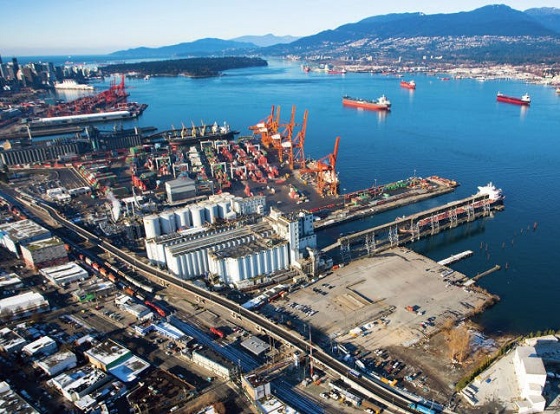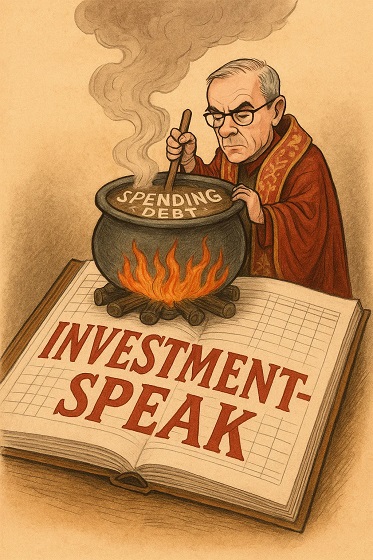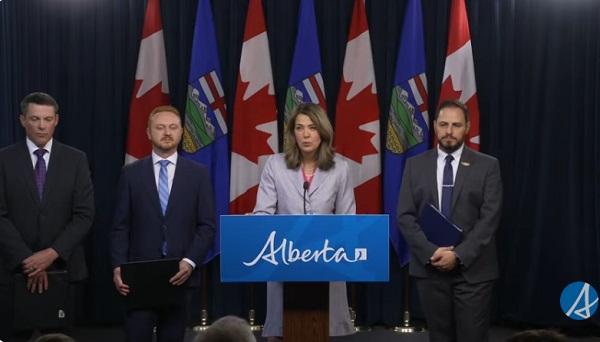Bjorn Lomborg
World chaos looms thanks to elites’ policies

By Bjorn Lomborg InsideSources.com
The disconnect between the global elite and the real world is growing daily. Most people are worn down by the pandemic, food and energy price hikes and general inflation, and they worry about a recession. Yet, the chattering classes are jetting into conferences in Davos or Aspen to declare that our biggest, immediate threats are climate change, environmental disasters and biodiversity loss.
This ignores most of our urgent crises. Almost a billion people are at risk of starvation this year, exacerbated by climate-concerned opposition to fertilizers made with fossil fuels. More than a billion schoolchildren have missed an average of nine months of learning because of lockdowns, which will cost their generation $1.6 trillion every year by 2040. Millions in the rich world will unnecessarily die of undiagnosed cancer and heart disease ignored during COVID, while millions more in the poor world will die unnecessarily of malaria and tuberculosis, just like they always do.
If you’re a wealthy, climate-concerned jet setter with private health insurance and a safe job, you don’t need to worry about malaria, recession, waiting in line for cancer tests or your children falling behind when schools close again. Nor are these the issues that will get you attention or airtime.
Solving the real world’s big problems is messy, and progress is slow and unspectacular. It is far more exhilarating to make grand promises to save the entire world by going net-zero or abandoning synthetic fertilizers.
Climate change is a real, man-made problem that deserves attention. It is also wildly overblown in the media, with every weather “event” turned into a televisual catastrophe. Last year, newspapers overflowed with stories of devastating hurricanes. Yet, 2021 had the fewest hurricanes globally since satellites started consistently monitoring the world in 1980. Hundreds of deaths from heat waves top the news for days, as in Europe just now, even though the data show everywhere many more people — 4.5 million globally — die of cold temperatures, often because of a lack of heating exacerbated by high energy prices.
The costs of the climate and environmental policies pushed at establishment talkfests are quickly becoming unbearable. For decades, we have been told that ending fossil fuels is cost-free or even beneficial. Now, we are seeing the immense economic and security costs of such untethered promises. Early pushback came in France with the “yellow vest” protests.
The Netherlands has been roiled by protests since the government introduced policies that would decimate the agricultural industry in the name of the environment. The policies threaten the production of the world’s second-largest food exporter right when global hunger is rising, yet the government cannot change course because environmentalists have taken legal action to lock in the lopsided policies.
It is even worse in Sri Lanka. Egged on by elite campaigners and the World Economic Forum to go organic, the government banned synthetic fertilizers in April 2021. Predictably, food production collapsed, and the currency defaulted. Large-scale protests from hungry and dissatisfied citizens who overran the presidential palace have now forced the resignation of the government.
Solving many of these problems is not rocket science. The rich should stop making food more expensive by insisting on organics. They should stop making energy more expensive by dictating intermittent renewables. Instead, we should increase research and development into better seeds to deliver more food with a lower environmental footprint. We should drive green-energy breakthroughs that could make drastic carbon-dioxide reductions cheap and feasible. And we should include the many other urgent crises that have simple and effective solutions — for instance, for tuberculosis and for securing much better learning in schools across the world with computer-assisted teaching at the right level.
Unfortunately, the elite seems to double down on climate and environment, and the Netherlands and Sri Lanka are just warnings of what will come. Net-zero will be the costliest policy that the world has ever embarked upon. The price tag just for paying for renewable assets and infrastructure alone will be more than $5 trillion every year for the next three decades, according to McKinsey &Co., a global management consulting firm. This equates to more than one-third of the global tax intake. For the United States, one study shows that getting 80 percent of the way to President Joe Biden’s climate promises by midcentury would cost each American more than $5,000 every year. Going all the way would likely more than double that cost.
Every year the European Union has to pay $68.5 billion in subsidies to support its renewables. But if the bloc persists — or is forced by courts — with its even stauncher net-zero promises, this price tag could explode to more than $1 trillion annually.
As in the Netherlands, governments will find themselves caught between environmentalists who use legal action to hold them to virtue-signaling vows and working families who cannot cope with rising prices.
The wild increases in energy prices in Europe, although partly caused by poorly designed climate policies, are mostly because of Russia’s indefensible war with Ukraine. But the energy cost could increase more every year for everyone if politicians double down on net-zero.
Even under today’s policies, European Union vice president and longtime climate action advocate Frans Timmermans acknowledges that many millions of Europeans might be unable to heat their homes this winter. This, he concludes, could lead to “very, very strong conflict and strife.”
He’s right. When people are cold, hungry and broke, they rebel. If the elite continues pushing incredibly expensive policies that are disconnected from the urgent challenges facing most people, we need to brace for much more global chaos.
Bjorn Lomborg
The Physics Behind The Spanish Blackout

From the Frontier Centre for Public Policy
Madrid knew solar and wind power were unreliable but pressed ahead anyway
When a grid failure plunged 55 million people in Spain and Portugal into darkness at the end of April, it should have been a wake-up call on green energy. Climate activists promised that solar and wind power were the future of cheap, dependable electricity. The massive half-day blackout shows otherwise. The nature of solar and wind generation makes grids that rely on them more prone to collapse—an issue that’s particularly expensive to ameliorate.
As I wrote in these pages in January, the data have long shown that environmentalists’ vision of cheap, reliable solar and wind energy was a mirage. The International Energy Agency’s latest cost data continue to underscore this: Consumers and businesses in countries with almost no solar and wind on average paid 11 U.S. cents for a kilowatt hour of electricity in 2023, but costs rise by more than 4 cents for every 10% increase in the portion of a nation’s power generation that’s covered by solar and wind. Green countries such as Germany pay 34 cents, more than 2.5 times the average U.S. rate and nearly four times China’s.
Prices are high in no small part because solar and wind require a duplicate backup energy system, often fossil-fuel driven, for when the sun doesn’t shine or the wind doesn’t blow. The Iberian blackout shows that the reliability issues and costs of solar and wind are worse than even this sort of data indicates.
Grids need to stay on a very stable frequency—generally 50 Hertz in Europe—or else you get blackouts. Fossil-fuel, hydro and nuclear generation all solve this problem naturally because they generate energy by powering massive spinning turbines. The inertia of these heavy rotating masses resists changes in speed and hence frequency, so that when sudden demand swings would otherwise drop or hike grid frequency, the turbines work as immense buffers. But wind and solar don’t power such heavy turbines to generate energy. It’s possible to make up for this with cutting-edge technology such as advanced inverters or synthetic inertia. But many solar and wind farms haven’t undergone these expensive upgrades. If a grid dominated by those two power sources gets off frequency, a blackout is more likely than in a system that relies on other energy sources.
Spain has been forcing its grid to rely more on unstable renewables. The country has pursued an aggressive green policy, including a commitment it adopted in 2021 to achieve “net zero” emissions by 2050. The share of solar and wind as a source of Spain’s electricity production went from less than 23% in 2015 to more than 43% last year. The government wants its total share of renewables to hit 81% in the next five years—even as it’s phasing out nuclear generation.
Just a week prior to the blackout, Spain bragged that for the first time, renewables delivered 100% of its electricity, though only for a period of minutes around 11:15 a.m. When it collapsed, the Iberian grid was powered by 74% renewable energy, with 55% coming from solar. It went down under the bright noon sun. When the Iberian grid frequency started faltering on April 28, the grid’s high proportion of solar and wind generation couldn’t stabilize it. This isn’t speculation; it’s physics. As the electricity supply across Spain collapsed, Portugal was pulled along, because the two countries are tightly interconnected through the Iberian electricity network.
Madrid had been warned. The parent company of Spain’s grid operator admitted in February: “The high penetration of renewable generation without the necessary technical capabilities in place to keep them operating properly in the event of a disturbance . . . can cause power generation outages, which could be severe.”
Yet the Spanish government is still in denial. Even while admitting that he didn’t know the April blackout’s cause, Prime Minister Pedro Sánchez insisted that there was “no empirical evidence” that renewables were to blame and that Spain is “not going to deviate a single millimeter” from its green energy ambitions.
Unless the country—and its neighbors—are comfortable with an increased risk of blackouts, this will require expensive upgrades. A new Reuters report written with an eye to the Iberian blackout finds that for Europe as a whole this would cost trillions of dollars in infrastructure updates. It’s possible that European politicians can talk voters into eating that cost. It’ll be impossible for India or nations in Africa to follow suit.
That may be unwelcome news to Mr. Sánchez, but even a prime minister can’t overcome physics. Spain’s commitment to solar and wind is forcing the country onto an unreliable, costly, more black-out-prone system. A common-sense approach would hold off on a sprint for carbon reductions and instead put money toward research into actually reliable, affordable green energy.
Unfortunately for Spain and those countries unlucky enough to be nearby, the Spanish energy system—as one Spanish politician put it—“is being managed with an enormous ideological bias.”
Bjorn Lomborg is president of the Copenhagen Consensus, a visiting fellow at Stanford University’s Hoover Institution and author of “Best Things First.”
Bjorn Lomborg
How Canada Can Respond to Climate Change Smartly

From the Fraser Institute
At a time when public finances are strained, and Canada and the world are facing many problems and threats, we need to consider policy choices carefully. On climate, we should spend smartly to solve it effectively, making sure there is enough money left over for all the other challenges.
A sensible response to climate change starts with telling it as it is. We are bombarded with doom-mongering that is too often just plain wrong. Climate change is a problem but it’s not the end of the world.
Yet the overheated rhetoric has convinced governments to spend taxpayer funds heavily on subsidizing current, inefficient solutions. In 2024, the world spent a record-setting CAD$3 trillion on the green energy transition. Taxpayers are directly and indirectly subsidizing millions of wind turbines and solar panels that do little for climate change but line the coffers of green energy companies.
We need to do better and invest more in the only realistic solution to climate change: low-carbon energy research and development. Studies indicate that every dollar invested in green R&D can prevent $11 in long-term climate damages, making it the most effective long-term global climate policy.
Throughout history, humanity has tackled major challenges not by imposing restrictions but by innovating and developing transformative technologies. We didn’t address 1950s air pollution in Los Angeles by banning cars but by creating the catalytic converter. We didn’t combat hunger by urging people to eat less, but through the 1960s Green Revolution that innovated high-yielding varieties to grow much more food.
In 1980, after the oil price shocks, the rich world spent more than 8 cents of every $100 of GDP on green R&D to find energy alternatives. As fossil fuels became cheap again, investment dropped. When climate concern grew, we forgot innovation and instead the focus shifted to subsidizing existing, ineffective solar and wind.
In 2015, governments promised to double green R&D spending by 2020, but did no such thing. By 2023, the rich world still wasn’t back to spending even 4 cents out of every $100 of GDP.
Globally, the rich world spends just CAD$35 billion on green R&D — one-hundredth of overall “green” spending. We should increase this four-fold to about $140 billion a year. Canada’s share would be less than $5 billion a year, less than a tenth of its 2024 CAD$50 billion energy transition spending.
This would allow us to accelerate green innovation and bring forward the day green becomes cheaper than fossil fuels. Breakthroughs are needed in many areas. Take nuclear power. Right now, it is way too expensive, largely because extensive regulations force the production of every new power plant into what essentially becomes a unique, eye-wateringly expensive, extravagant artwork.
The next generation of nuclear power would work on small, modular reactors that get type approval in the production stage and then get produced by the thousand at low cost. The merits of this approach are obvious: we don’t have a bureaucracy that, at a huge cost, certifies every consumer’s cellphone when it is bought. We don’t see every airport making ridiculously burdensome requirements for every newly built airplane. Instead, they both get type-approved and then mass-produced.
We should support the innovation of so-called fourth-generation nuclear power, because if Canadian innovation can make nuclear energy cheaper than fossil fuels, everyone in the world will be able to make the switch—not just rich, well-meaning Canadians, but China, India, and countries across Africa.
Of course, we don’t know if fourth-generation nuclear will work out. That is the nature of innovation. But with smarter spending on R&D, we can afford to focus on many potential technologies. We should consider investing in innovation to grow hydrogen production along with water purification, next-generation battery technology, growing algae on the ocean surface producing CO₂-free oil (a proposal from the decoder of the human genome, Craig Venter), CO₂ extraction, fusion, second-generation biofuels, and thousands of other potential areas.
We must stop believing that spending ever-more money subsidizing still-inefficient technology is going to be a major part of the climate solution. Telling voters across the world for many decades to be poorer, colder, less comfortable, with less meat, fewer cars and no plane travel will never work, and will certainly not be copied by China, India and Africa. What will work is innovating a future where green is cheaper.
Innovation needs to be the cornerstone of our climate policy. Secondly, we need to invest in adaptation. Adaptive infrastructure like green areas and water features help cool cities during heatwaves. Farmers already adapt their practices to suit changing climates. As temperatures rise, farmers plant earlier, with better-adapted varieties or change what they grow, allowing the world to be ever-better fed.
Adaptation has often been overlooked in climate change policy, or derided as a distraction from reducing emissions. The truth is it’s a crucial part of avoiding large parts of the climate problem.
Along with innovation and adaptation, the third climate policy is to drive human development. Lifting communities out of poverty and making them flourish is not just good in and of itself — it is also a defense against rising temperatures. Eliminating poverty reduces vulnerability to climate events like heat waves or hurricanes. Prosperous societies afford more healthcare, social protection, and investment in climate adaptation. Wealthy countries spend more on environmental preservation, reducing deforestation, and promoting conservation efforts.
Focusing funds on these three policy areas will mean Canada can help spark the breakthroughs that are needed to lower energy costs while reducing emissions and making future generations around the world more resilient to climate and all the other big challenges. The path to solving climate change lies in innovation, adaptation, and building prosperous economies.
-

 Crime1 day ago
Crime1 day agoCanada Seizes 4,300 Litres of Chinese Drug Precursors Amid Trump’s Tariff Pressure Over Fentanyl Flows
-

 Alberta19 hours ago
Alberta19 hours agoFrom Underdog to Top Broodmare
-

 Alberta1 day ago
Alberta1 day agoHow one major media torqued its coverage – in the take no prisoners words of a former Alberta premier
-

 Bruce Dowbiggin2 days ago
Bruce Dowbiggin2 days agoGet Ready: Your House May Not Be Yours Much Longer
-

 Alberta1 day ago
Alberta1 day agoProvince orders School Boards to gather data on class sizes and complexity by Nov 24
-

 Business2 days ago
Business2 days agoCanada’s attack on religious charities makes no fiscal sense
-

 Business2 days ago
Business2 days agoWhen Words Cook the Books: The Politics of ‘Investment-Speak’
-

 Opinion1 day ago
Opinion1 day agoBill Gates Shakes Up the Climate Discussion



